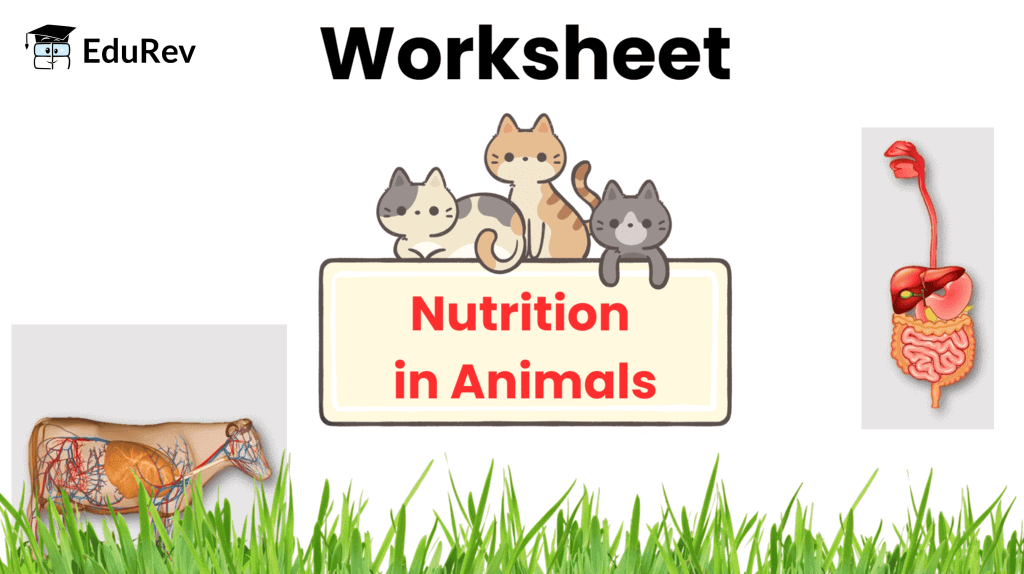Nutrition in Animals Class 7 Worksheet Science Chapter 2

Q.1. True/False
(i) Digestion of starch starts in the stomach.
(ii) The tongue helps in mixing food with saliva.
(iii) The gall bladder temporarily stores bile.
(iv) The ruminants bring back swallowed grass into their mouth and chew it for some time.
(v) We chew the food with the teeth and break it down mechanically into small pieces.
(vi) Large intestine receives digested and absorbed food.
Q.2. Fill in the blanks.
(i) The main steps of nutrition in humans are ____, ____, ____, ____ and ____.
(ii) The largest gland in the human body is ____.
(iii) The stomach releases hydrochloric acid and ____ juices which act on food.
(iv) The inner wall of the small intestine has many finger-like outgrowths called ____.
(v) Amoeba digests its food in the food ____.
(vi) We chew the food with the ____ and break it down mechanically into small pieces.
Q.3. Where are fats digested in the body?
Q.4. What kills bacteria that enter along with the juices to act?
Q.5. Where are faeces formed in the human body?
Q.6. Where food is absorbed in our body?
Q.7. Where faeces are stored?
Q.8. Name the end products of fats.
Q.9. What is ingestion?
Q.10. What does saliva do to food in our mouth?
Q.11. What is rumen?
Q.12. What are permanent teeth?
Q.13. What does animal nutrition include?
Q.14. What are the different modes of feeding in animals?
Q.15. What is diarrhoea?
Q.16. What do you mean by assimilation?
Q.17. What are ruminant animals?
Q.18. What do pancreatic juices digest?
Q.19. What is cud?
Q.20. What do you mean by rumination?
You can find Worksheets Solutions here: Worksheet Solutions: Nutrition in Animals
|
112 videos|286 docs|28 tests
|
FAQs on Nutrition in Animals Class 7 Worksheet Science Chapter 2
| 1. What is the importance of nutrition in animals? |  |
| 2. What are the different types of nutrition in animals? |  |
| 3. How do animals obtain nutrients from their food? |  |
| 4. What are essential nutrients in animal nutrition? |  |
| 5. How does the digestive system of animals work? |  |

















